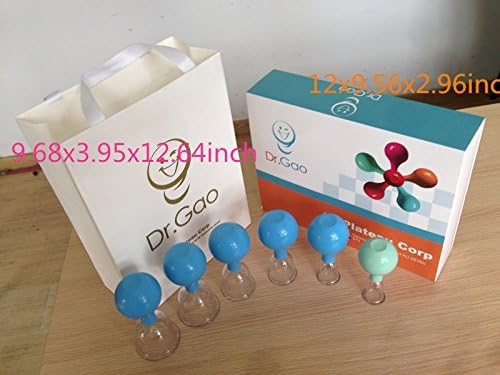Chinese Medicine Physiotherapy aims to prevent and treat diseases by utilizing artificial or natural physical factors that act on the human body to generate favorable reactions. This method is a crucial component of rehabilitation treatment, influencing the human body directly and indirectly on nerves and body fluids. This, in turn, adjusts blood circulation, accelerates metabolism, facilitates cell and tissue repair, regulates the nervous system, improves immune function, eliminates pathogenic factors, enhances the pathological process, and accomplishes the goal of treatment.
Traditional Chinese Medicine Cupping Therapy 3rd Edition, Check The Price >>>
Commonly used physical factors in modern times include electricity, light, sound, gas, magnetism, temperature, and mechanical force. Electrotherapy is categorized into direct current, low frequency, medium frequency, high frequency, and static electricity. Phototherapy includes infrared, far infrared, visible light, ultraviolet, and semiconductor laser.
Due to the rapid development in modern physics and biology, physiotherapy has gained increasing attention and become an integral part of clinical comprehensive treatment and rehabilitation medicine. Physiotherapy, being a non-invasive method, is readily accepted by patients. It has a broad range of effects, serving not only for symptomatic treatment but also as an etiological treatment for specific diseases. It aids in improving the curative effect, shortening the treatment course, and benefiting the rehabilitation of patients and the disabled.
TCM physiotherapy is an external treatment method grounded in TCM theory and guided by meridian theory. TCM views the human body as an organic whole, with zang-fu organs physically coordinated and promoting each other. This approach incorporates traditional practices such as sunlight, hot spring water, and cold water, dating back to ancient times, along with the use of stone tools in the Stone Age. With continuous refinement, these methods have not only shown remarkable results in alleviating significant human diseases but have also become the foundation for treatment methods in Chinese medical science.
In the evolution of TCM physiotherapy, it inherits and develops TCM theory, combining the five pillars of TCM theory (Bianstone, acupuncture, moxibustion, medicine, and Daoyin) with meridian science. It utilizes modern physiotherapy facilities to enhance treatment efficacy, resulting in a synergistic effect.
Case: Cervical Spondylosis Treatment
Cervical spondylosis, caused by abnormal cervical spine movement due to wind-cold, strain, trauma, or nerve compression, presents symptoms such as neck and shoulder pain, upper limb pain, finger numbness, dizziness, and tinnitus. An examination revealed dislocation of the 2nd and 3rd cervical vertebrae with anterior displacement of the vertebral body. Treatment commenced with a gas therapy machine to activate meridians and tissue cells, enhance blood circulation, and improve immune function, achieving therapeutic effects such as strengthening the body, dispelling wind and cold, promoting qi and blood circulation, and alleviating paralysis.
Traditional Chinese Medicine Physiotherapy and Health
I. Diet and Health
Ancient wisdom posits that a balanced diet nourishes essence Qi, corrects yin-yang imbalances in the viscera, prevents and cures diseases, and extends life. The diet should focus on “broad food,” incorporating the nourishment of five grains, five fruits, five animals, and five vegetables. Attention should be given to the harmony of five flavors to avoid nutritional imbalance and bodily dysfunction.
II. Meridian Health
Meridians form a comprehensive network throughout the human body, regulating blood and qi flow to maintain the normal function of various tissue systems. According to “The Yellow Emperor’s Classic of Internal Medicine,” meridians play a vital role in determining life and death, managing various diseases, and regulating deficiency and excess. Regularly stimulating, massaging, and acupuncture of key acupoints, including Hegu, Neiguan, and Zusanli, is essential for health preservation.
III. Gujing Health
Ancient beliefs emphasize that essence and blood constitute the essence of human nutrients and the material basis of life. Maintaining yin essence is crucial for preventing physical weakness, disease, and promoting longevity.
IV. Timely Health Preservation
Recognizing the different climate changes in the four seasons, the ancients advocated adjusting lifestyle according to the natural laws of birth, growth, collection, and storage. Adapting the movement of internal organs, yin and yang, qi and blood to the four seasons is essential for maintaining health and preventing diseases.
V. Attenuating Health Care
Balancing emotions and avoiding excessive fatigue, diet-related issues, and exposure to harmful environmental factors is essential for preventing diseases. Attenuating toxins through dietary conditioning and other measures helps avoid diseases, premature aging, and promotes longevity.
VI. Jingshen Health Preservation
Maintaining a calm mind and stable emotions is crucial for preserving vitality, harmonizing the five internal organs, preventing diseases, improving health, and prolonging life. Negative emotions, such as anger, joy, sadness, and fear, can lead to various physical and mental illnesses.
VII. Self-Cultivation and Health Maintenance
Pursuing health and longevity begins with self-cultivation, eliminating delusions, and engaging in positive speech and actions. Developing a good character, doing beneficial deeds for others, and maintaining a positive mindset contribute to overall well-being.
VIII. Regulating Qi and Maintaining Health
Regulating qi and health care involve adopting a careful daily life, aligning with the four seasons, avoiding overwork, preventing over-ease, adjusting diet, harmonizing the five flavors, managing emotions, controlling speech, practicing breathing, and guidance exercises. These measures aim to restore vitality, cure diseases, and extend life.
IX. Tonic Health
Traditional medicine underscores the use of nourishing drugs to regulate yin and yang, nourish the viscera, and nourish the essence and blood. Tonic should be administered dialectically and appropriately, considering adaptation to the four seasons. For instance, lung tonics are more suitable in autumn, while warming tonics are preferable in winter.

